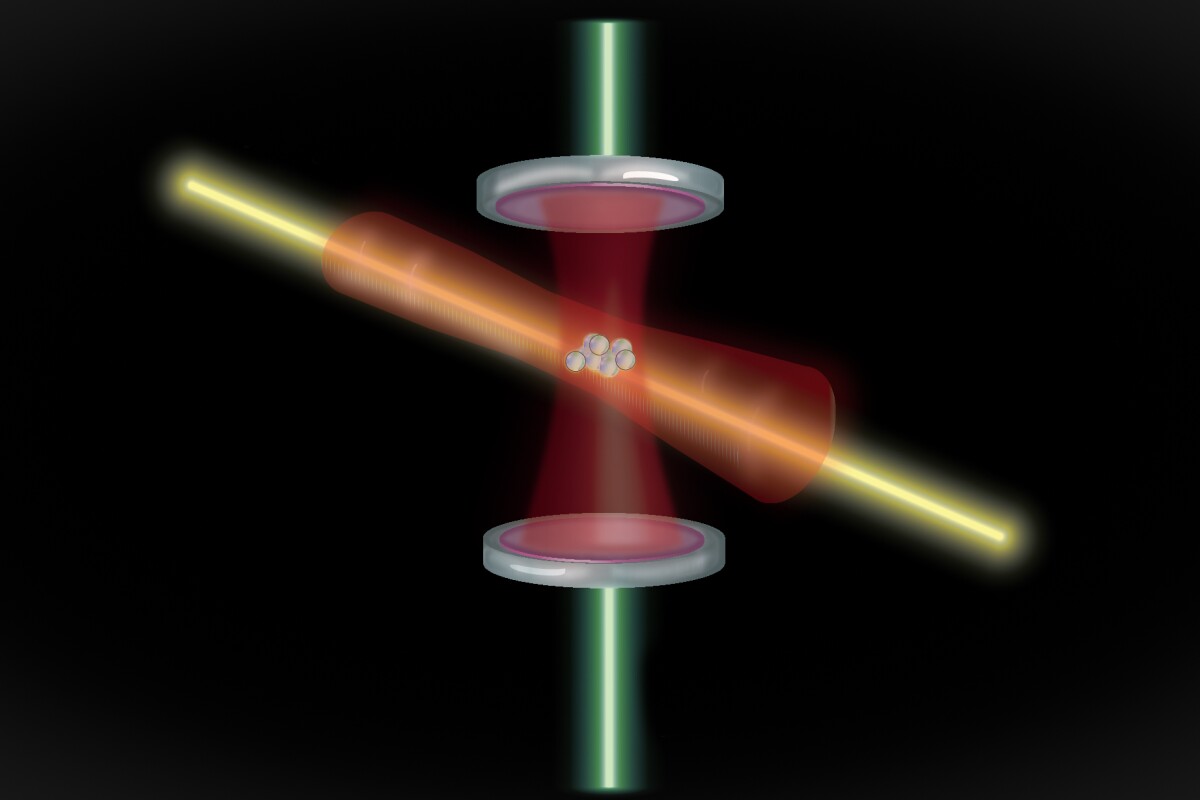
The entangled photons are operating independently of the atoms and outside their quantum effects. Thus we can develop even greater precision for time keeping.
We are also slowly learning how to manipulate photons.
Cloud Cosmology allows the material components of the universe to be simulated. Simullating photons is a different matter and plucking a processor out of that a tall order.
.
The new atomic clock design uses lasers to trap and measure the oscillation of quantum entangled atoms to keep time more precisely
https://newatlas.com/physics/quantum-entangled-atomic-clock/
Atomic clocks are the most precise timekeepers we have today, with the best ones keeping time to within one second in 15 billion years. But there’s always room for improvement, as researchers at MIT have now demonstrated with a new quantum-entangled atomic clock.
Atoms vibrate in such precisely reliable patterns that you could set your watch to them – and that’s exactly what atomic clocks do. These timepieces use lasers to measure these oscillations, and the resulting times are accurate enough to set national and international standards. The cesium-133 atom, for instance, oscillates exactly 9,192,631,770 times per second, and it’s so stable that this pattern has officially defined the second since 1968.
Now a team of MIT physicists has designed a new type of atomic clock, which could push the boundaries of precision even further. Ideally, tracking the vibrations of a single atom should keep time most accurately, but unfortunately random quantum fluctuations can mess with the measurements. This is known as the Standard Quantum Limit.
So, quantum clocks usually track a gas made up of thousands of atoms of the same type – traditionally cesium, although ytterbium is emerging as a new frontrunner in recent years. These atoms are cooled almost to absolute zero, then held in place with lasers while another laser measures their oscillations. By taking the average of many atoms, a more accurate answer can be reached.
Unfortunately, the effects of the Standard Quantum Limit may be reduced, but they can’t be completely removed. The MIT team’s new atomic clock reduces the effect even further, thanks to quantum entanglement.
It sounds impossible, but in some circumstances atoms can become so entwined that measuring the state of one can change the state of its partner instantaneously – no matter how far apart they are. This is known as quantum entanglement, and the new clock takes advantage of that phenomenon for higher precision timekeeping.
The researchers started with about 350 atoms of ytterbium-171, which oscillates even faster than cesium. These atoms are trapped in an optical cavity between two mirrors, then a laser is shone into the cavity to quantum entangle the atoms.
“It’s like the light serves as a communication link between atoms,” says Chi Shu, co-author of the study. “The first atom that sees this light will modify the light slightly, and that light also modifies the second atom, and the third atom, and through many cycles, the atoms collectively know each other and start behaving similarly."
Once the atoms are entangled, a second laser is shone through the cloud to measure their average frequency. The team found that this method created a clock that could reach a specific precision four times faster than a similar one using non-entangled atoms.
The researchers say that this method could make atomic clocks so precise that after the entire age of the universe they would still be less than 100 milliseconds out of sync. Plus, they could help scientists investigate some of the biggest brain twisters in physics, such as dark matter, gravitational waves, and whether the rules of physics change over time.
“As the universe ages, does the speed of light change?” says Vladan Vuletic, co-author of the study. “Does the charge of the electron change? That’s what you can probe with more precise atomic clocks.”
The research was published in the journal Nature.
Source: MIT
No comments:
Post a Comment